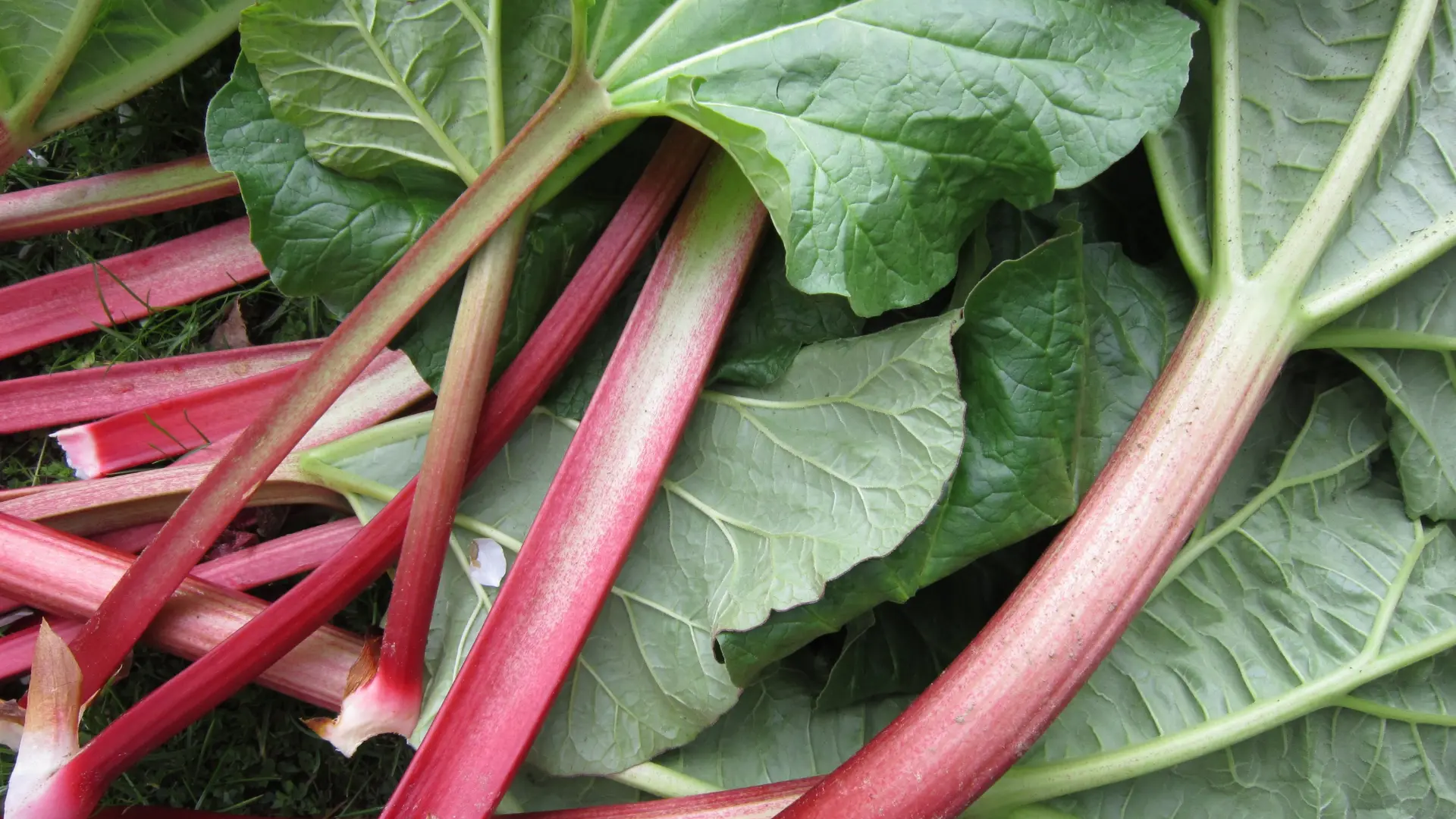Rhubarb is a perennial vegetable easily grown in the garden. It produces one of the first harvests of the growing season. This beautiful crop has colors that range from pale pink to maroon, is full of flavor, and, although sour, can be sweetened and made into pies and desserts.
Rhubarb is not for the weak. It is grown by brave and patient gardeners who understand the importance and love the flavor of this sometimes scarce plant. Oftentimes, it takes a year or two, sometimes three, for rhubarb to finally be ready for harvest.
But when you finally use it into the delicious pie you’ve been waiting to use it for, the wait will be worthwhile.
When to Harvest Rhubarb

If you recently planted your rhubarb, you should not be considering a harvest in the first year. How long your rhubarb will take to get ripe sometimes depends on how it was planted.
There are several ways to plant rhubarb: from seed, division, crown, or bare root. You can grow one in a container too if you’d like.
Rhubarb plants grown from division can be harvested in the first season in most cases. This is because they will be taken from already matured plants that will produce stalks easily.
Divisions can be taken from plants that are about to go into or coming out of dormancy. Your yield is directly proportional to how large the root section is.
The stalks should be mature for harvest when they are at least 10 inches long. Don’t worry about the color as some green stalked varieties won’t change color when ripe.
Rhubarb planted from bare root should be left alone in the first season. You can harvest lightly in the second, but you’ll begin to enjoy your plant in its third year.
A bare root can be purchased from a nursery and is a lot smaller than a division you get from an already mature plant.
For this reason, it is best to leave it alone to establish a strong root system.
A rhubarb planted from crown should also be left alone for that first year. A crown is a small rhubarb plant.
After buying from the local nursery and transplanting it into your garden, you should also allow it some time to grow and establish its roots in the garden.
If your plant looks robust in the second year, you can lightly harvest some stalks. By the third year, it should be mature enough and produce a lot to harvest regularly.
Growing a rhubarb from seed to harvest takes a long time. You’ll have to wait two to three years before you can start to enjoy your bounty.
The plant would have produced stems big enough for a very light picking in the second year. By the third year, you’ll be able to harvest some more, just a little bit more.
But you can harvest your rhubarb normally in the fourth year after planting.
Now, you understand how long each planting method will have you wait for your crop to be mature enough.
The prime harvesting season for rhubarb is early spring when the stalks are still juicy and tender.
You can harvest your stalks from April through spring into summer until July. After this, please do not make any more harvests.
Leaving the plant untouched for the rest of the summer will allow it to store nutrients for winter sustenance, so you’ll get a healthy returning rhubarb the next spring.
Harvest as many stalks as you’d like, but always leave more than half the original number of stalks remaining to fuel continued growth.
If your plant is harvested too heavily, subsequent growths will be affected and may not be as thick or as big as the previous ones.
How to Harvest Rhubarb

You can pick your stalks at any time of the day. It might be preferable to the plant if you do this in the cool morning or evening, but harvesting in the afternoon will not affect it.
To harvest a rhubarb stalk, pull and twist as close as possible to the base of the plant. Pull gently while twisting the stalk.
It is supposed to come away cleanly without too much fuss. If the stalk is too difficult, take a clean, sharp knife or a pair of shears and cut carefully at the base.
Be careful not to cut into the central bulb or nick another stalk.
Remove the leaves with your finger or using a knife and throw them away or add them to a compost pile. Leaving the leaves will make the stalk dry faster.
Rhubarb leaves contain poisonous oxalic acid, so they should not be eaten by animals or humans.
Remove any broken stalks from the plant, as these can cause infections to grow if left behind. Also, remove any flowering stalks to help the plant focus its energy on growing healthier stalks rather than flowers.
Storing Freshly Harvested Rhubarb
Harvested Rhubarb stalks can be stored in a plastic freezer bag in the refrigerator. You can also wrap them in aluminum foil.
Place your wrapped rhubarb stalks in the refrigerator at 32 to 40 degrees Fahrenheit temperatures. You can freeze them for two to four weeks.
There are many recipes for using this tart vegetable. There’s a lot you can do from jams to ice cream to all manner of baked goods.
So why don’t you get to planting so you can also partake in this fresh greatness? Enjoy.
